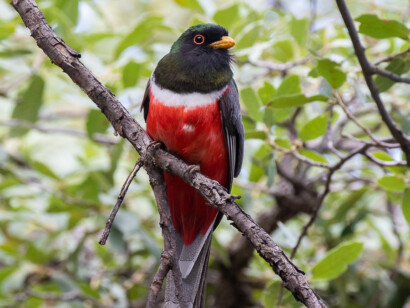Hawaii Birding Tour
Highlights
Highlights
- Visit 3 Hawaiian islands - Oahu, Kaua'i and The Big Island of Hawai’i
- Many marvelous endemic songbirds in unique forested environments
- Picturesque and spectacular scenery, from smoking volcanic craters to huge waterfalls and scenic coastlines
- Spectacular views of seabirds from coastal viewpoints
- Visit National Wildlife Refuges, Waimea Canyon, the Alaka’i Swamp, Hawaii Volcanoes National Park and the incredible Kilauea Crater
Map
Map
Overview
Tour Overview
The Hawaiian Islands are quite simply enchanting! Spectacular scenery, mild climate and unique cultures are the backdrop for our Hawaii birding tour of the three islands Hawai’i, Kaua’i and O’ahu.
Known as the endangered species capital of the world, we search for the special endemics of each island, especially the bizarre honeycreepers with intriguing names like ‘I’iwi, ‘Amakihi, ‘Apapane and the amazing ‘Akiapola’au.
Laysan Albatross, Red-footed Booby and both White-tailed and Red-tailed Tropicbirds are marvellously close. Humpback Whales and Spinner Dolphins are just offshore in the incredible blue waters, Green Sea Turtles are along beaches, and the Kilauea Crater is just simply a must-see!
A superb tour to a special place!
Dates & Prices
DATES & PRICES
What's Included
What's Included
Tour Price Includes
- All accommodation
- All Meals and soft drinks
- Ground transportation
- 2 short, inter-island flights included
- 4 - 8 participants will be guided by one guide. 9 - 12 participants will be guided by two guides in two vehicles.
- All park, conservation and entrance fees
Tour Price Does Not Include
- Flights to and from start/end location
- Travel Insurance
- Items of a personal nature
- Alcoholic beverages
Gallery
Gallery
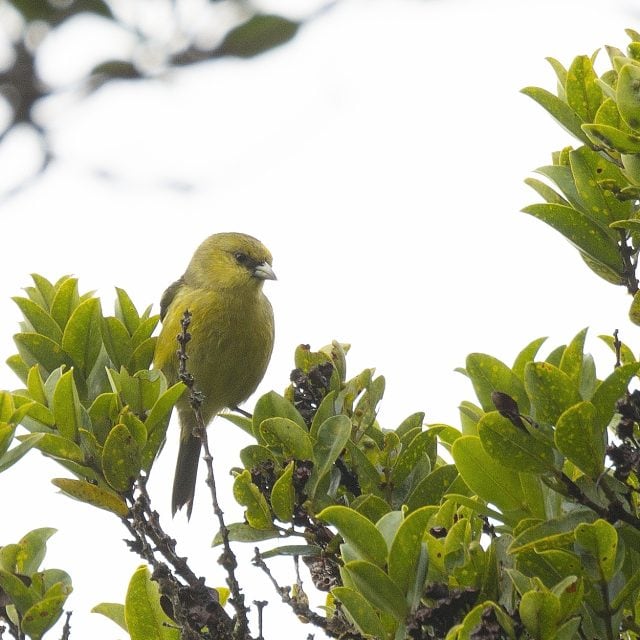











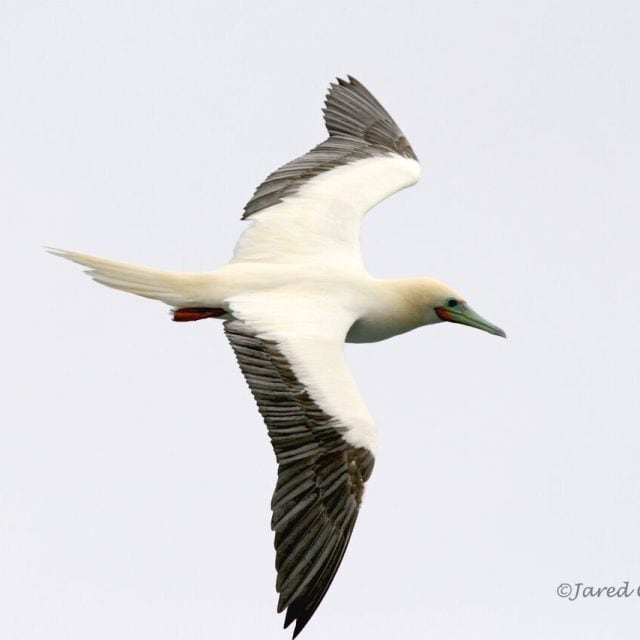
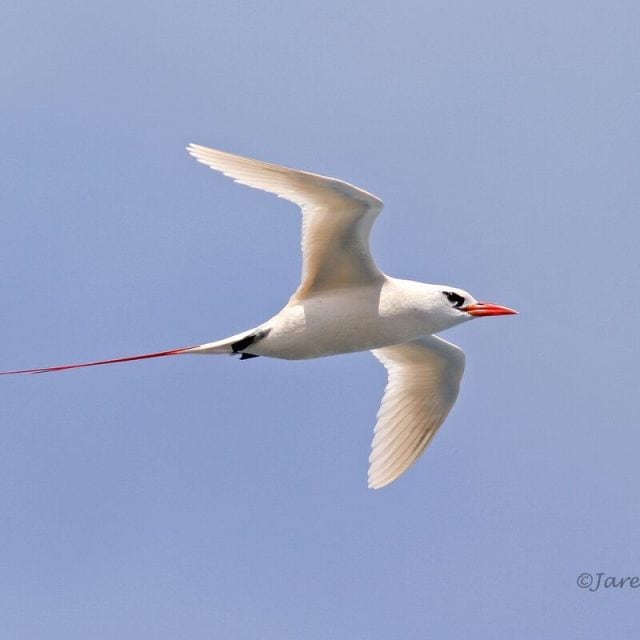


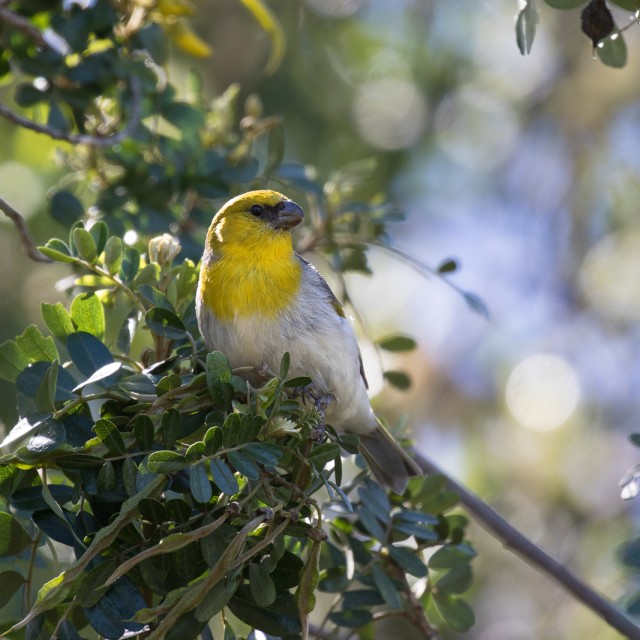
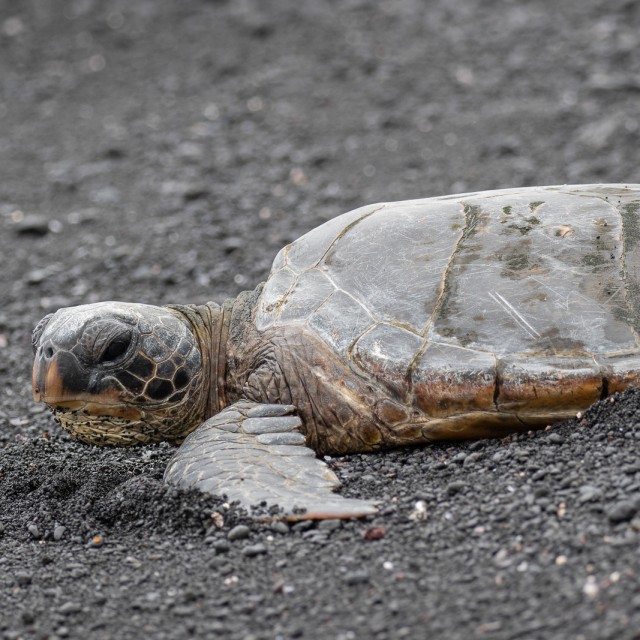
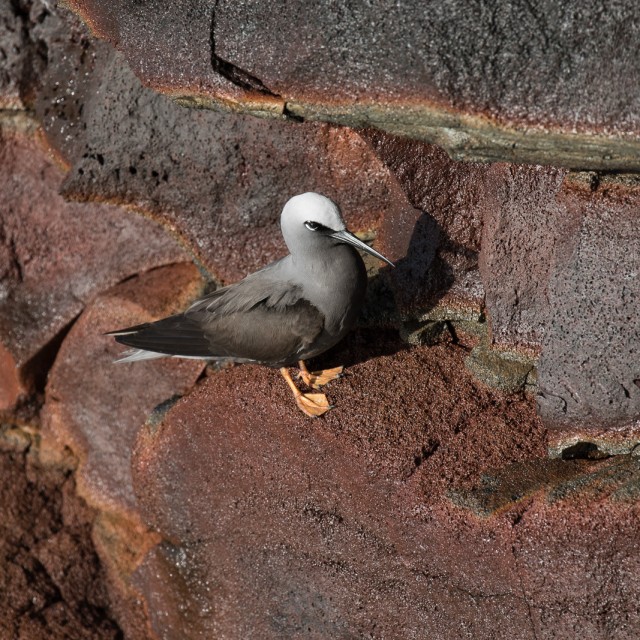

Itinerary
Itinerary
Day 1 - Arrival Oahu
Our Hawaii birding tour begins on Oahu, where we settle into Hawaiian life. Night in Waikiki.

Day 2 - Oahu
O’ahu is the hub of Hawaii, where most Hawaiians live and most tourists come to stay. Nevertheless, there are some excellent birding localities, and we visit some for specialties such as O’ahu ‘Amakihi and the endangered Oahu ‘Elepaio. We visit Kapi’olani Park where White Terns nest and introduced exotics such as Rose-ringed Parakeet, Common Waxbill, Yellow-fronted Canary and Red-whiskered and Red-vented Bulbuls forage. We drive along scenic coastlines, stopping to look for seabirds such as Brown Noddy and Masked Booby, to the James Campbell National Wildlife Refuge, where there should be a large and diverse gathering of waterfowl and shorebirds, including the range-restricted Bristle-thighed Curlew. Night in Waikiki.
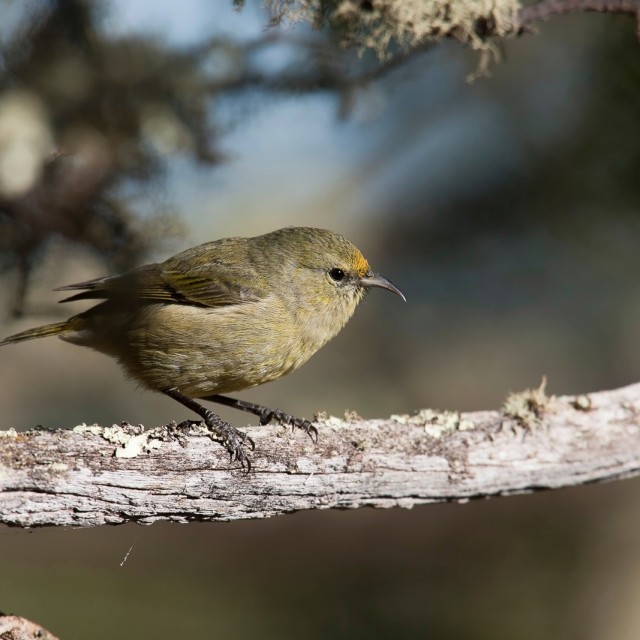
Days 3 to 6 - Kaua'i
We take the mid-day flight to our next island, Kaua’i, where we spend the next four nights. Kaua’i is called the “garden island” because of its lush green vegetation, a product of its high annual rainfall. On average 460 inches of rain per year falls in the Alaka’i Swamp region of Kaua’i, making it one of the wettest places on earth. Because Kaua’i is fairly small, we visit much of the island, taking in Kilauea Point National Wildlife Refuge (the best place in Hawaii for seabirds), Hanalei National Wildlife Refuge for waterbirds, the Hanapepe area, and especially Waimea Canyon, Koke'e State Park and the famous Alaka’i Swamp for a chance at some of Kaua’i’s endemic songbirds.
Kaua’i is a wonderful island, and our days will be full of excellent birding and marvelous scenery. We should do well for seabirds. Our list should include Laysan Albatross, Wedge-tailed Shearwater, White-tailed and Red-tailed Tropicbirds, Great Frigatebird, and both Brown and Red-footed Boobies, often close enough for excellent photographs. Wetlands on the island hold populations of Ae’o or Hawaiian Stilt, Hawaiian Coot, Hawaiian Gallinule, and the endangered Koloa. Around the edge of ponds Japanese Bush-Warbler occur along with the gifted songster the White-rumped Shama. Nene are quite widespread here, and we should find quite a few during our stay.
In the Alaka’i Swamp we look for native forest birds. Some, such as ‘I'iwi and ‘Apapane, will be familiar to us, but others will be new. These include the Kaua’i ‘Amakihi, Kaua’i ‘Elepaio and the Anianiau - a small, yellow, warbler-like honeycreeper. We will also make an effort to track down the increasingly scarce ‘Akeke‘e, whose population has declined dramatically over the past decade. While exploring the forested trails of the Alaka’i Swamp there is always a chance, albeit remote, of finding a great rarity such as the ‘Akikiki or Puaiohi.
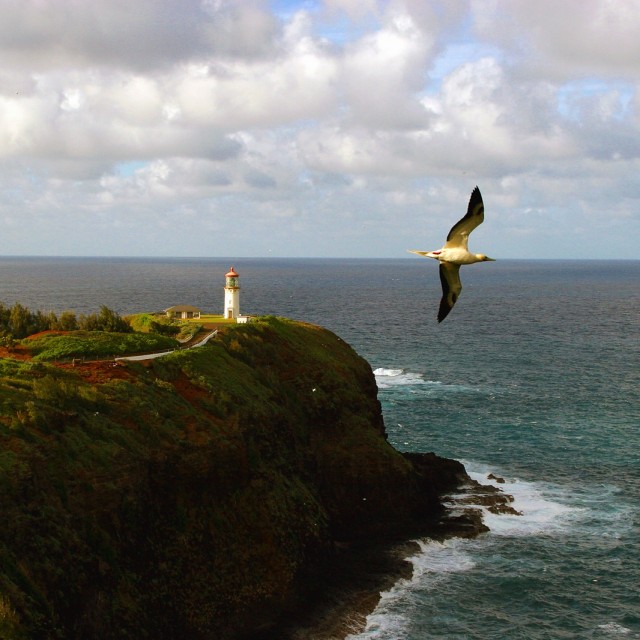
Days 7 to 11 - The Big Island of Hawai’i
We reluctantly leave Kaua’i and fly to our last island, The Big Island of Hawai’i, where we spend the first two nights near Volcanoes National Park. In the park we visit the spectacular Kilauea Crater, which has still active steam vents. In the early morning, the songs of the Omao, an endemic Hawaiian thrush, and the ‘Apapane, a crimson honeycreeper with white undertail coverts, should greet us. We spend time looking around the park, for Black (Hawaiian) Noddy along the black lava seacoast, Nene in the lava fields, Kalij Pheasant along easy and pleasant trails, Hwamei rustling about in the undergrowth, and possibly ‘Io just about anywhere cruising over the park. A must-see attraction is the Thurston Lava Tube, a remarkable geologic phenomenon. Here, Omao are more common than elsewhere, along with ‘Apapane and Hawai’i ‘Amakihi.
We transfer to our accommodations in Kona for the next three nights. We visit several localities around the Big Island searching for the many Hawaiian endemics that occur here. On one day we visit the superb Hakalau Forest National Wildlife Refuge, which preserves some of the finest Koa and Ohi’a Lehua forests remaining on the Big Island. Here there are still good populations of ‘I‘iwi, ‘Akepa, Hawai’i ‘Elepaio, Hawai’i ‘Amakihi and Hawai’i Creeper. We will also attempt to find the increasingly rare ‘Akiapola’au, a yellow-green honeycreeper that has one of the most amazing bills in the bird world. The bird feeds on insects hiding in trunks and branches; the lower mandible is used like a woodpecker’s bill - for chipping and chiselling into the wood until the insect larvae is exposed, and then the extraordinary upper mandible, which is long, thin and sickle-shaped, is used to extract the larvae. On another day, we visit Mauna Kea to look for the Palila, the last of the Big Island’s grosbeak honeycreepers that inhabits the Mamane-Naio forests on the upper slopes, as well as a pale subspecies of the highly variable Hawai’i ‘Elepaio.
Introduced species such as Eurasian Sky Lark, Saffron Finch and Red-billed Leiothrix occur here as well. In fact, we will encounter many introduced species during our stay on the islands; on the Big Island, we should encounter species as diverse as Yellow-billed Cardinal, African Silverbill, California Quail, Wild Turkey, Erckel’s and Black Francolin and Java Sparrow.

Day 12 - Departure, Kona
Our Hawaii birding tour concludes today in Kona. You can depart anytime today.
What to Expect
What to Expect
Overview
The Hawaii tour is an exciting and rewarding experience, but it is also quite demanding. Many days involve early starts, extensive travel—including winding mountain roads—and birding throughout the day, often leaving little time to rest before dinner. Despite the challenges, the tour offers incredible rewards: endemic honeycreepers, superb seabirds, an amazingly diverse flora, breathtaking vistas, colorful marine life, and much more.
Food
We generally have breakfast at the hotel or at a nearby restaurant/coffee shop before we head out for the day. Sometimes we will have optional pre-breakfast walks. We often take a picnic lunch in the field, but will occasionally stop at a restaurant for lunch. Dinner is usually at the lodge or a nearby restaurant. Each evening after dinner we compile the day’s checklist, review the day’s activities, birds, mammals and other observations, and plan the next day’s activities.
Accommodation
We stay in comfortable hotels that provide the perfect end to an adventurous day.
Walking
The walking on this tour is rated as moderate and some terrain may be challenging. The following hikes are the most difficult: ‘Aiea Loop Trail: 3 hour hike with 550 feet of elevation gain; slick conditions and steep drop offs | Hakalau Forest and Palila Discovery Trail: both physically demanding due to high elevation. In areas such as Koke’e State Park, Alaka’i Swamp, and some trails in Volcanoes National Park, participants should expect short steep sections, uneven and potentially slippery terrain. We take these trickier trails at a slow and comfortable pace, but participants should be able to hike 5km (3 miles) up and down moderate grade slopes for 2 hours. Sturdy footwear with ankle support is recommended for some trails (particularly in Kaua’i at the Alaka’i Swamp); otherwise comfortable running shoes are fine for most other activities. Participants are welcome to bring hiking poles if they wish.
Driving
Most days have a small to moderate amount of driving. There will be two longer drives, but we make several stops along the way. Traffic can be an issue in Kauai, but we will try to avoid that where possible.
Climate
The weather is mostly pleasant, with an average low temperature of 20°C (68°F) and an average high temperature of 27°C (80.6°F), but there will be rain on some days, and on our visits to higher elevations we may encounter coolish and misty conditions. Clothing should be layered, and a light sweater and a waterproof jacket are highly recommended. And don’t forget a hat – Hawaii is tropical!
Featured Wildlife
Featured Wildlife
While we cannot guarantee sightings of the birds or mammals listed below, we believe that encountering these species is quite likely during this tour.
- Nene
- Koloa
- Laysan Albatross
- White-tailed and Red-tailed Tropicbirds
- Red-footed Booby
- Great Frigatebird
- ‘Io (Hawaiian Hawk)
- Pacific Golden-Plover
- Ae’o (Hawaiian Stilt)
- Wandering Tattler
- Bristle-thighed Curlew
- Hawaiian Noddy
- White Tern
- Pueo (Short-eared Owl)
- O’ahu ‘Elepaio
- Omao
- Several Hawaiian honeycreepers (Sub-family Drepanidinae) including: Palila, ‘Anianiau, Hawai’i ‘Akepa, ‘I‘iwi and the increasingly rare ‘Akiapola’au
- Humpback Whale
- Spinner Dolphin
- Green Sea Turtle
Past Tour Checklists
Past Tour Checklists
View the list of birds and other wildlife we encountered on our past tours.
- Hawaii birding tour species list 2025
- Hawaii birding tour species list 2024
- Hawaii birding tour species list 2023
- Hawaii birding tour species list 2022
- Hawaii birding tour species list 2019
- See More...
- Hawaii birding tour species list 2018
- Hawaii birding tour species list 2017
- Hawaii birding tour species list 2016
- Hawaii birding tour species list 2015
- Hawaii birding tour species list 2014
- Hawaii birding tour species list 2013
- Hawaii birding tour species list 2011
- Hawaii birding tour species list 2008
- Hawaii birding tour species list 2006
- Hawaii birding tour species list 2005
- Hawaii birding tour species list 2004
- Hawaii birding tour species list 2003


